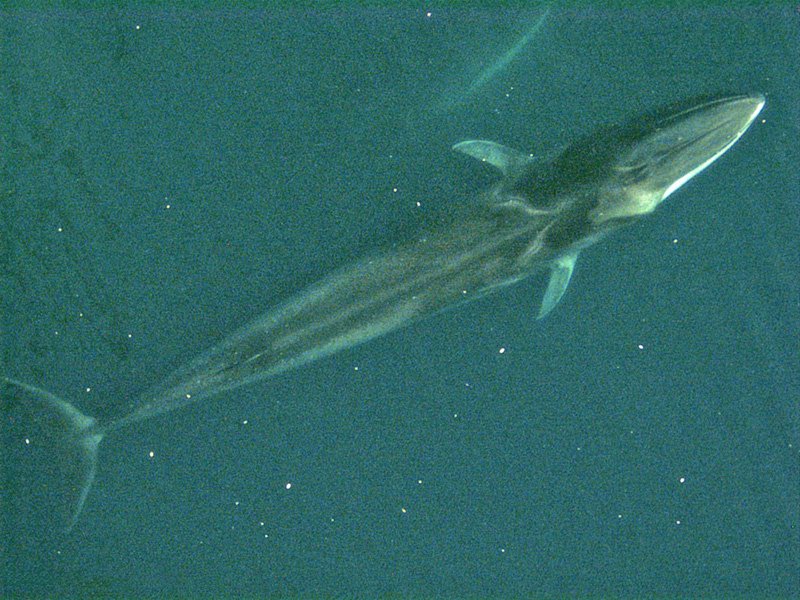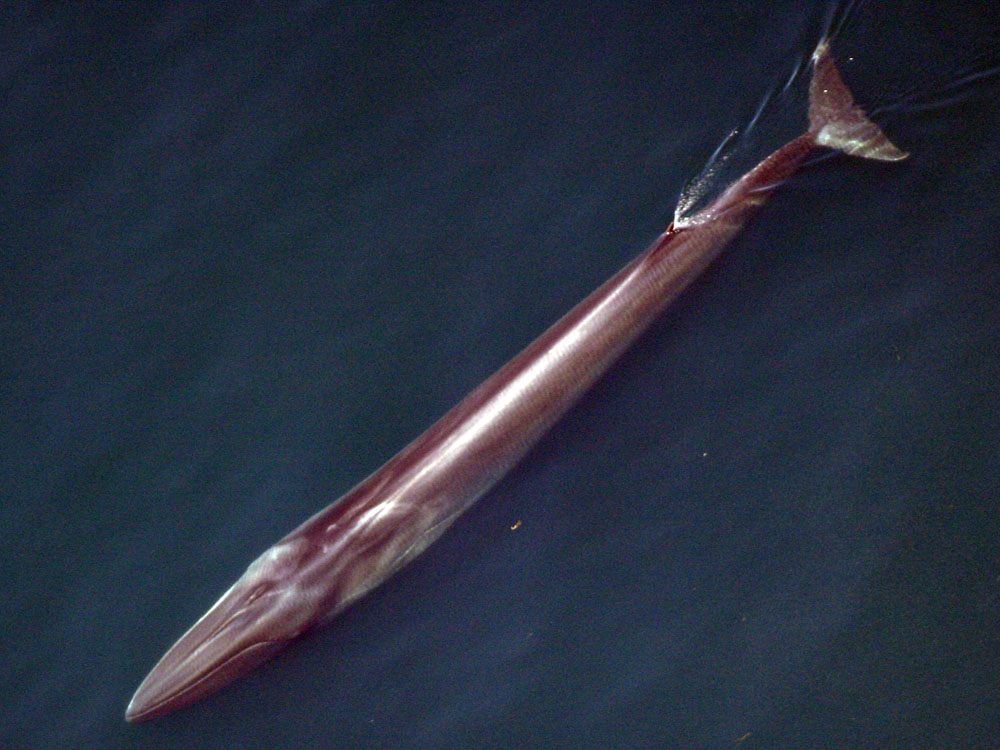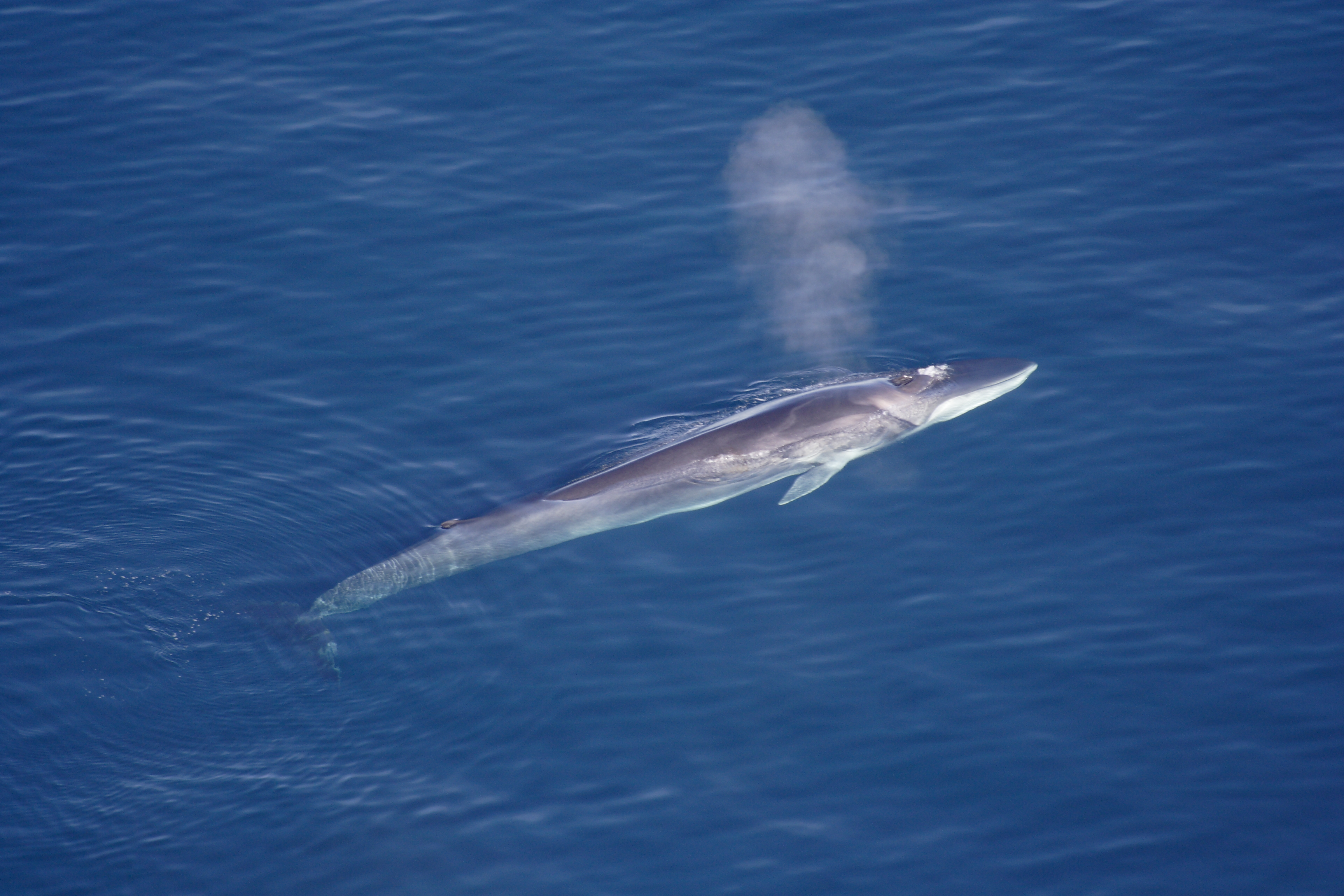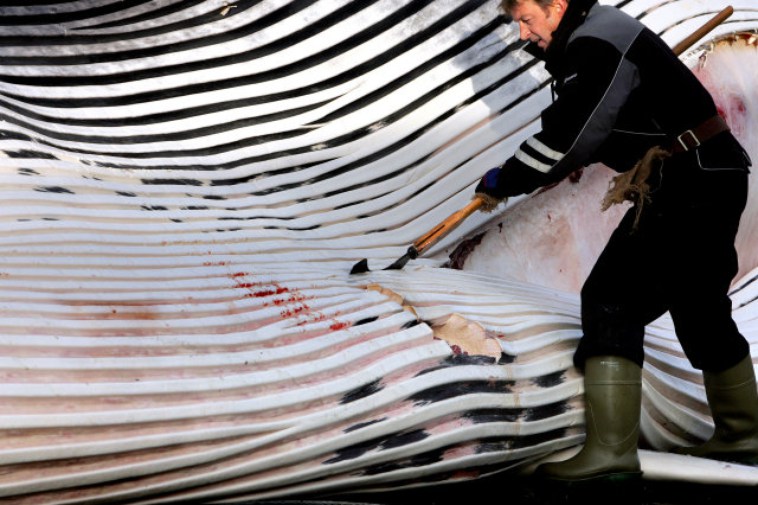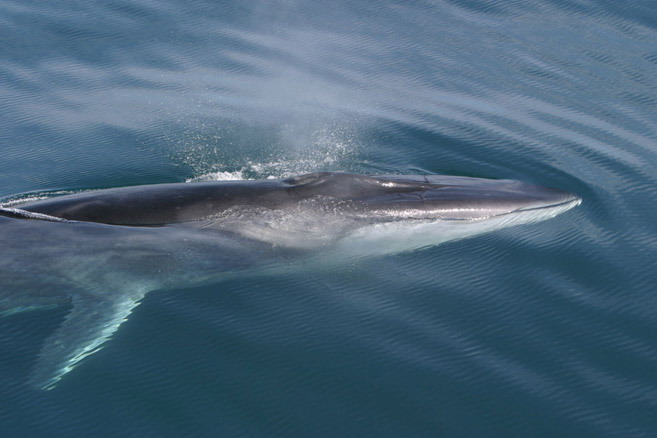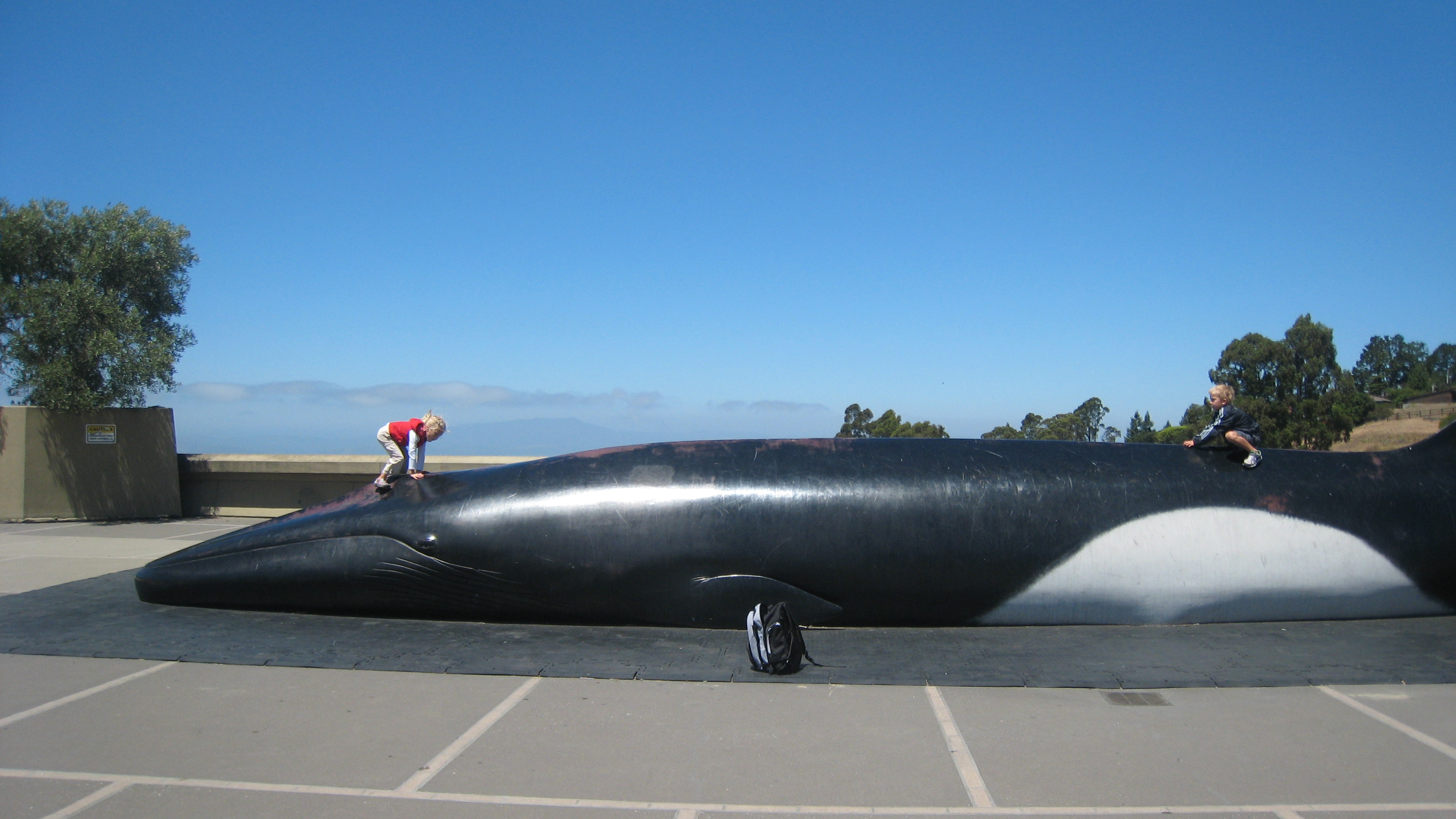The Fin Whale – 2nd Biggest Animal On Earth
Everyone above the age of 5 knows that the biggest creature on earth is the blue whale, not quite so many people know who comes in second place. It is in fact the fin whale (Balaenoptera physalus).
To be fair “big” isn’t a particularly descriptive word. If we went by average weight the second place would be held by the North Pacific right whale, but for the purposes of this article and to keep the title snappy, when I say the fin whale is ‘second biggest’ I mean by average length. OK?
Growing up to 27.3 metres (89.5 ft) long and weighing nearly 74 tonnes the fin whale is a glorious creature. The blue whale has its own magnificence of course, but the sleek lines and pleasing paint job of the fin whale make it an even more impressive sight (in my humble opinion).
American naturalist Roy Chapman Andrews, more famous for his exploits in the desert than the oceans, referred to the fin whale like so:
…the greyhound of the sea… for its beautiful, slender body is built like a racing yacht and the animal can surpass the speed of the fastest ocean steamship.
The fin whale can be found (if you’re lucky) in most of the world’s oceans, but like most of the major cetaceans we have left, the fin whale is languishing under the threat of extinction. Throughout the 1900’s more than 725,000 individuals were taken from the seas of the Southern Hemisphere. Now there are thought to be just 100,000 left.
The International Whaling Committee (IWC) has banned the hunting of fin whales, but the folks of Iceland and Japan have started catching and killing them again regardless. In the news at the moment Pamela Anderson (of all people) has written an open letter to Vladimir Putin asking him to block the passage of a cargo ship carrying 1,700 tonnes of fin whale meat to Japan. Let’s see how that pans out. I expect little but stoney cold silence.
The fin whale is generally brownish or greyish with a splash of white. Nothing particularly out of the ordinary for a big marine mammal. What is interesting about the fin whale’s markings are its asymmetry. The left side of the head is dark gray, while the right side exhibits a complex pattern of contrasting light and dark. On the right lower jaw is a white or light gray mandible patch and on the left side similar but much fainter markings.
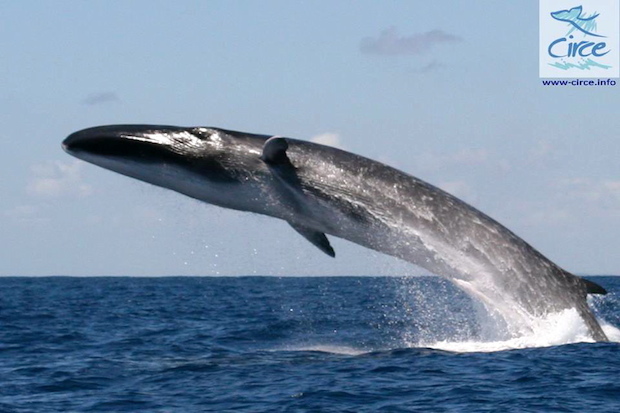
This type of asymmetry is seen to a lesser extent in Omura’s whale and the minke, but the fin whale really has gone to town with its lopsided markings. Nobody’s too sure why it has developed this attractive garb, but I’m sure it’s useful for something.
Another interesting anatomical point to mention about the fin whale is that it has particularly stretchy nerves. Nerves in mammals aren’t generally stretchy at all. If you stretch them by 10% they stop working, and if you stretch them to 30% they just snap. It seems that this neuronal stretchiness in fin whales is something to do with their feeding habits.
Large whales including fin whales feed on small creatures, so they have to take in huge mouthfuls of them. A blue whale can take in over 1 million calories per mouthful (that’s the equivalent of two deep fried donner kebabs coated in bacon). The feat of filling one’s gob with krill involves an awful lot of mouth and tongue gymnastics, and so the nerves within these giant structures need to be elastic enough to cope.
The fin whale’s nerves, it turns out, are actually tightly packed into long parcels of stretchy collagen and elastin. Like a concertina stored within a rubber hose. As the nerve is yanked, the coating stretches and the coiled up nerves within are unfolded to their maximum length. Neat. So the nerves aren’t stretchy as such, they’re just packaged very cleverly indeed.
Fin whales make surprisingly regular sounds. So regular that when they were first recorded by American scientists some believed the sounds were those pesky Ruskis up to no good in their waters.
This is a recording of a fin whale sped up x10. Have a listen:
There’s a life-sized model of a juvenile fin whale outside the Lawrence Hall of Science in California. She’s called Pheena the Fin Whale:
Whenever I write about a dramatic animal it’s difficult not to end on a downer. Once again humans are readying themselves to wave goodbye to another species. It’s a shame. But, in an effort to be unseasonally chipper: you never know, they might outlive us all. Yay armageddon!
MORE DEEP SEA WONDERS:
SOUTHERN RIGHT WHALE DOLPHINS, THE SPORTS CARS OF THE SEA
SAILFISH: THE FASTEST FISH IN THE SEA

